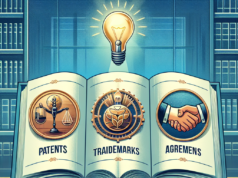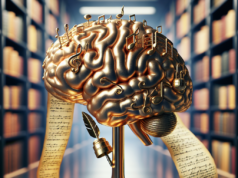
In an era defined by rapid technological advancements and the proliferation of digital content, copyright law is undergoing significant transformations. As creators, consumers, and platforms navigate this evolving landscape, understanding the nuances of these changes is crucial. This article delves into the revolutionary shifts in copyright law, highlighting recent developments, the impact of technology, and strategies for compliance in a digital world.
Understanding the Evolution of Copyright Law in the Digital Age
Copyright law has historically aimed to balance the rights of creators with the public’s interest in accessing and using creative works. However, the advent of the internet and digital technologies has disrupted traditional frameworks, leading to a reevaluation of existing laws. The rise of user-generated content, streaming services, and social media platforms has necessitated a more nuanced approach to copyright, as the lines between creator and consumer blur. As a result, lawmakers and stakeholders are increasingly recognizing the need for reforms that address the unique challenges posed by digital distribution, including issues of attribution, ownership, and the protection of intellectual property in an interconnected world.
Key Changes in Copyright Legislation: An Overview of Recent Developments
Recent legislative changes reflect a growing recognition of the need to adapt copyright laws to the digital landscape. Notable among these is the implementation of the European Union’s Copyright Directive, which aims to enhance the rights of creators and ensure fair compensation in the digital marketplace. This directive introduces measures such as the “link tax,” which requires platforms to negotiate licenses for news content, and the “upload filter,” which mandates that platforms take proactive steps to prevent copyright infringement. In the United States, ongoing discussions around the Music Modernization Act and the potential reform of the Digital Millennium Copyright Act (DMCA) signal a shift towards more equitable frameworks that consider the realities of digital content creation and distribution.
The Impact of Technology on Copyright Enforcement and Compliance
Technological advancements have both complicated and facilitated copyright enforcement. On one hand, the ease of copying and distributing digital content has led to widespread infringement, challenging traditional enforcement mechanisms. On the other hand, technology has also provided new tools for rights holders to protect their works. Automated content recognition systems, blockchain technology, and digital rights management (DRM) solutions are increasingly being employed to monitor usage and enforce copyright. However, the effectiveness of these technologies raises questions about user privacy, the potential for overreach, and the balance between enforcement and access. As technology continues to evolve, so too must the strategies employed to ensure compliance with copyright laws.
Fair Use Revisited: New Interpretations and Their Implications
The doctrine of fair use, which allows for limited use of copyrighted material without permission, is undergoing reinterpretation in light of recent court rulings and legislative changes. Courts are increasingly considering the transformative nature of works and the context in which they are used, leading to a broader understanding of what constitutes fair use. This shift has significant implications for educators, researchers, and content creators who rely on the ability to use existing works for commentary, criticism, or educational purposes. As the boundaries of fair use expand, stakeholders must remain vigilant in understanding how these interpretations may affect their rights and responsibilities in the digital landscape.
Global Perspectives: How Other Countries Are Reforming Copyright Laws
As countries around the world grapple with the challenges of copyright in the digital age, various reform efforts are emerging. In Canada, for instance, recent amendments to the Copyright Act aim to modernize the law by addressing issues related to digital content and user rights. Similarly, Australia has introduced reforms to enhance the rights of creators while ensuring that consumers retain access to information and culture. In contrast, countries like China are tightening their copyright enforcement measures, reflecting a different approach to balancing creator rights with economic growth. These global perspectives highlight the diverse strategies being employed to navigate the complexities of copyright law, underscoring the need for international dialogue and cooperation in addressing shared challenges.
Preparing for the Future: Strategies for Navigating Copyright Challenges
As the landscape of copyright law continues to evolve, individuals and organizations must adopt proactive strategies to navigate potential challenges. Staying informed about legislative changes and court rulings is essential for understanding rights and obligations. Additionally, investing in education and training on copyright compliance can empower creators and users to make informed decisions about content use. Developing clear policies for content creation, sharing, and attribution can also mitigate risks associated with infringement. Finally, fostering open dialogues with legal experts and industry stakeholders can facilitate collaboration and innovation in addressing copyright issues, ensuring that the rights of creators are upheld while promoting access to knowledge and culture.
The revolutionary shifts in copyright law present both challenges and opportunities for creators, consumers, and platforms alike. As we navigate this complex landscape, it is imperative to remain informed and engaged with ongoing developments. By understanding the implications of recent changes and adopting proactive strategies, stakeholders can better position themselves to thrive in a digital world where copyright law continues to evolve. The future of copyright is not just about protecting rights; it is about fostering creativity, innovation, and access in an increasingly interconnected society.


























